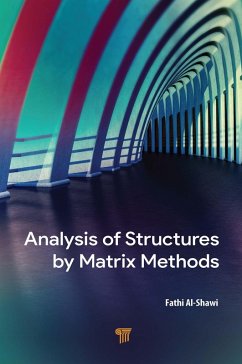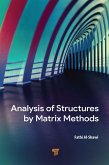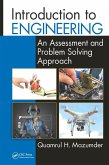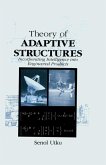The analysis of engineering structures has always been a challenge to engineers, and in the past, classical methods were used to quantify the response of a structure to the applied forces. These methods were suitable for the analysis of relatively simple structures that could be solved by hand calculations but complicated structures had to be simplified to a model that could be solved by classical methods. The results, however, were approximations depending on the modifications made to the structure as well as on the experience and judgement of the analyst. These limitations led to the derivation of the slope-deflection equations for continuous beams, and later, formulation of the moment distribution method. With the advent of electronic computers, systematic procedures for the analysis of structures have been developed. Computer programs help in obtaining required solutions to the simultaneous equations in the case of structures where the number of equations is large and hand calculations are not suitable. The detailed work with simultaneous equations can be made in a general and compact form by using matrix notation, leading to the development of the matrix methods of structural analysis.
This book deals with the analysis of engineering structures made of skeletal members and covers the type of structures that are commonly used in practice. It builds up on the subject matter dealing with matrix algebra, analysis of bar elements, special forms of members, stability and vibration of structures, and pin-connected, rigid-plane, and 3D frames. It treats the important step of formulating the overall stiffness matrix of a structure in a systematic and straightforward manner and uses simple mathematical approaches wherever possible. The book is reader friendly, particularly for beginners who have no prior knowledge in this subject and can also be used as a textbook by undergraduate and postgraduate students studying for a degree in civil, structural, or mechanical engineering as well as by practicing engineers who have not studied this subject but are using software packages that deal with the analysis of engineering structures.
This book deals with the analysis of engineering structures made of skeletal members and covers the type of structures that are commonly used in practice. It builds up on the subject matter dealing with matrix algebra, analysis of bar elements, special forms of members, stability and vibration of structures, and pin-connected, rigid-plane, and 3D frames. It treats the important step of formulating the overall stiffness matrix of a structure in a systematic and straightforward manner and uses simple mathematical approaches wherever possible. The book is reader friendly, particularly for beginners who have no prior knowledge in this subject and can also be used as a textbook by undergraduate and postgraduate students studying for a degree in civil, structural, or mechanical engineering as well as by practicing engineers who have not studied this subject but are using software packages that deal with the analysis of engineering structures.
Dieser Download kann aus rechtlichen Gründen nur mit Rechnungsadresse in A, B, BG, CY, CZ, D, DK, EW, E, FIN, F, GR, HR, H, IRL, I, LT, L, LR, M, NL, PL, P, R, S, SLO, SK ausgeliefert werden.









